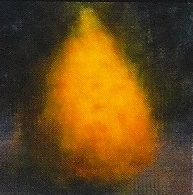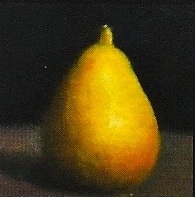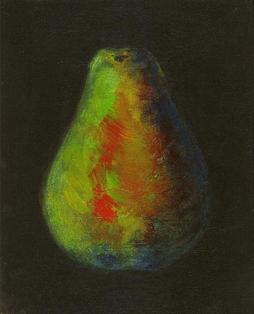One of the greatest problems that limits potential artists from creating is the mistaken belief that in order to paint, they must first know how to draw. Knowing how to draw is an unnecessary skill for a painter, and can inhibit the ability to produce a creative piece of artwork. It is a false assumption that artists who produce striking paintings must draw first. I propose that the ability to reproduce a realistic image is not an essential requirement to create a compelling painting.
Painting is an acquired skill and can only improve with practice. When must you start? Now! Because it is the same way you started on every path in your life - at the beginning, learning by trial and error, practicing to become better at what you do and not knowing the outcome until it happens.
The artist Dominic Vignola says, “If you are not familiar with anatomy, composition, or perspective, then you have nothing to unlearn. The illusion of these things will automatically be present in your work when you paint tonally. When one learns to see in terms of light and shadow, no subject is too difficult to paint because one no longer attempts to paint "things" but rather the way these things look, thereby achieving convincing results every time." Example of Vignola’s tonal vision is shown in the two images below from one of his early stages to final product.
More at http://www.oilpaintingwithoutdrawing.com/
If one is an admirer of impressionist technique one may consider the early image final, but if drawn to realism one can continue developing the image to a more faithful representation of nature. Note the shadow of the pear that is placed true to where the light strikes it. This type of creation need not be limited to a representation of objects as they are, but can be made from the imagination by simply bringing forth an image of where the light strikes it.
Arbitrary color can be applied depending on its propensity to advance or recede. Warm colors tend to come forward while cool colors stay back. Such effects can be reversed depending on density, size and placement of the colors - simple but challenging manifestations with which one can experiment as one progresses. One of my early experiments using arbitrary color to represent tonal value, volume and placement in a selected space is shown below.
Arbitrary color can be applied depending on its propensity to advance or recede. Warm colors tend to come forward while cool colors stay back. Such effects can be reversed depending on density, size and placement of the colors - simple but challenging manifestations with which one can experiment as one progresses. One of my early experiments using arbitrary color to represent tonal value, volume and placement in a selected space is shown below.
It is up to the artist to include or exclude shadow depending on his/her desire for compositional structure and for faithfulness or lack thereof for realism in its representation. There are no rules for making such determinations. It is entirely at the discretion of the artist. This work illustrates that form can be expressed in the simplest manner without a realistic captivation, but by observing tonal value and the shapes in which variations in value occur.
True reality can never be grasped; it is embedded in the deepest part of the artist’s mind and she continually strives to render it. In an attempt to express vision, the artist makes a creation and must eventually be satisfied that the piece is complete, but the search for reality continues. In the words of Leonardo Da Vinci, “Art is never finished, only abandoned.”
Each person has a vision of the world that is unique. Ridding oneself of the inhibitions that prevent beginning a work of art is essential. It’s the only way to secure the joy of knowing whether you are captivated by what you have taken upon yourself to learn. Embrace the process itself. Do not be afraid of failure and be bold and true to your vision.
Edited by Donna M. Schweibert
True reality can never be grasped; it is embedded in the deepest part of the artist’s mind and she continually strives to render it. In an attempt to express vision, the artist makes a creation and must eventually be satisfied that the piece is complete, but the search for reality continues. In the words of Leonardo Da Vinci, “Art is never finished, only abandoned.”
Each person has a vision of the world that is unique. Ridding oneself of the inhibitions that prevent beginning a work of art is essential. It’s the only way to secure the joy of knowing whether you are captivated by what you have taken upon yourself to learn. Embrace the process itself. Do not be afraid of failure and be bold and true to your vision.
Edited by Donna M. Schweibert



 RSS Feed
RSS Feed